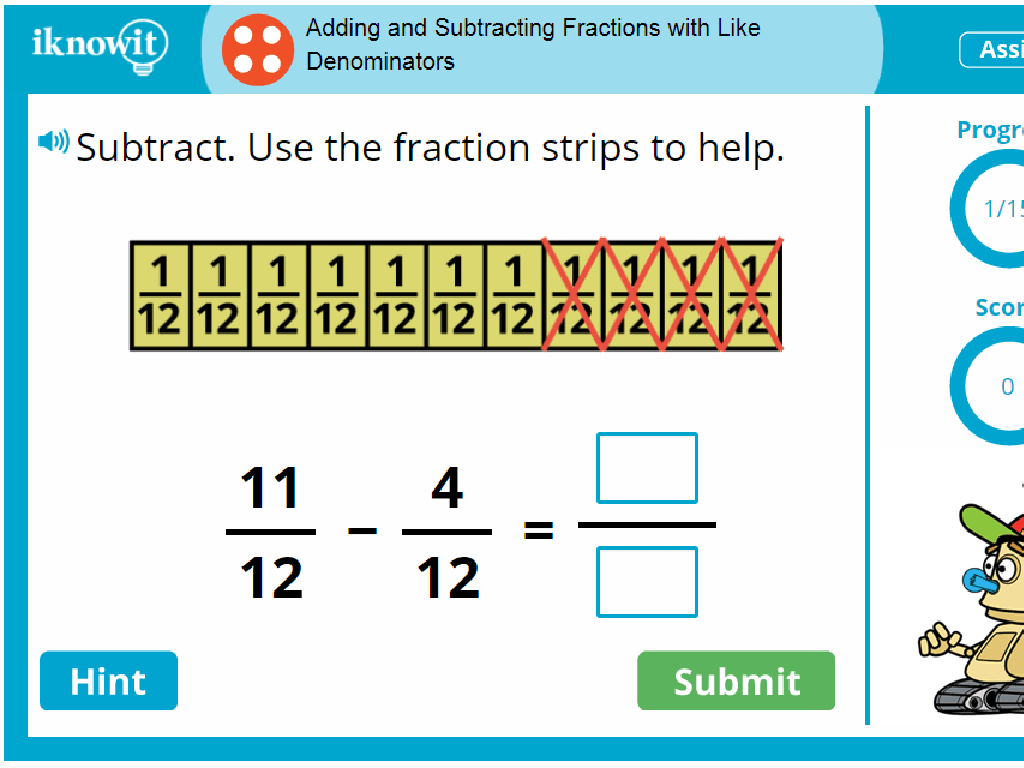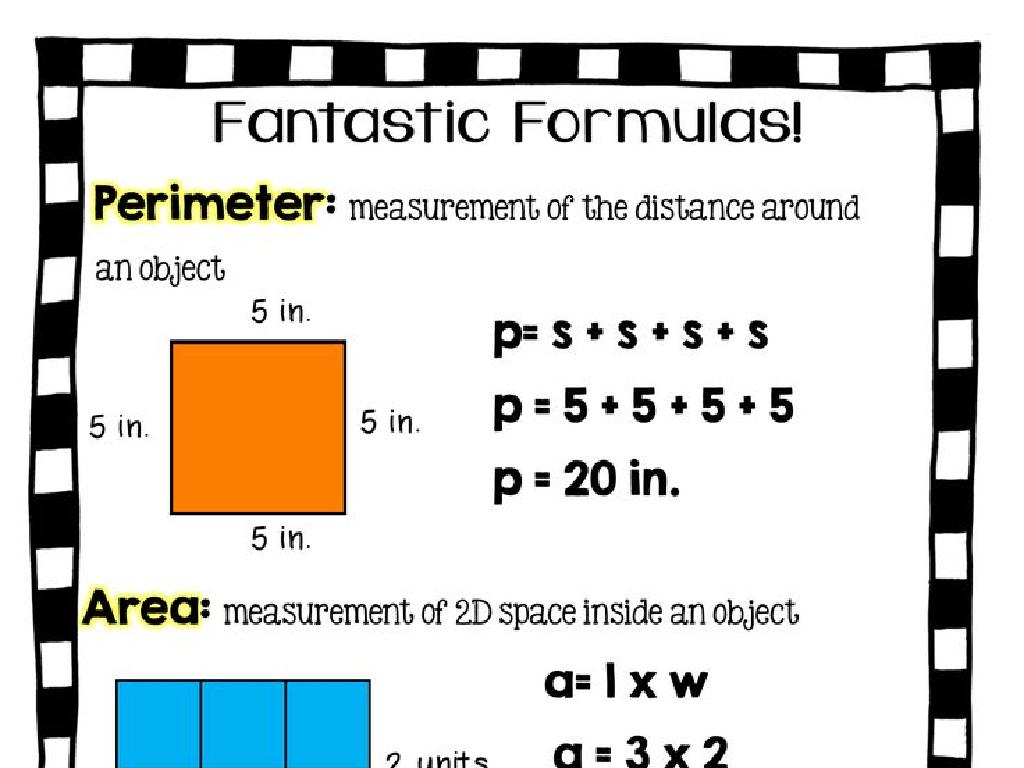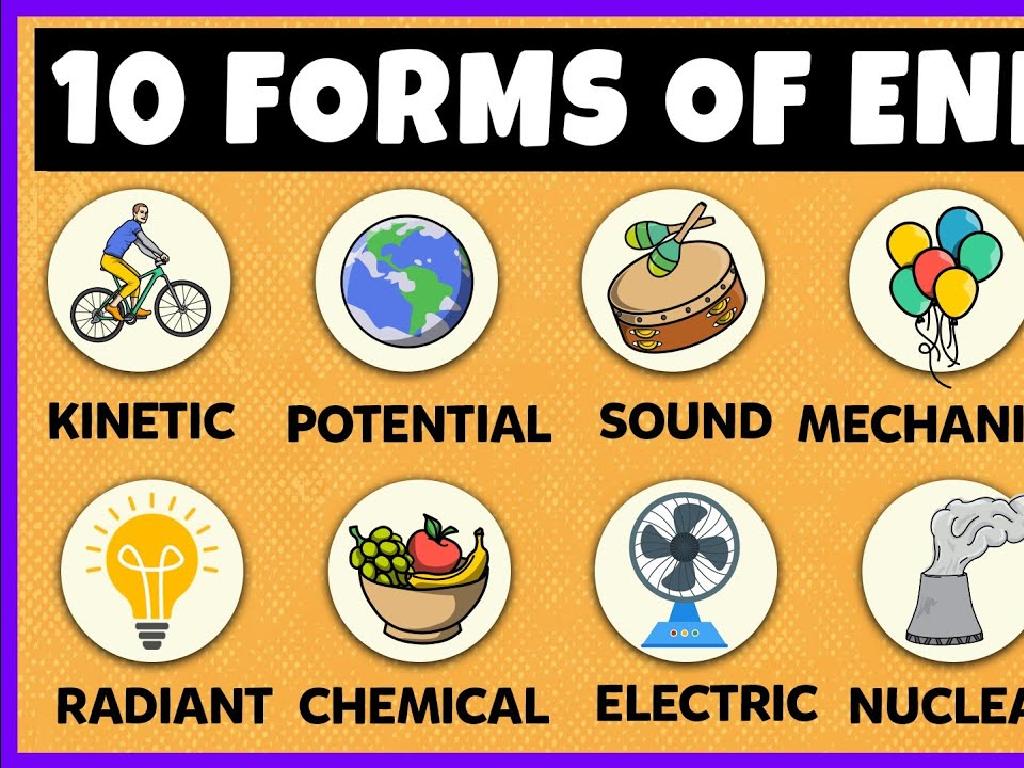Properties Of Multiplication
Subject: Math
Grade: Sixth grade
Topic: Equivalent Expressions
Please LOG IN to download the presentation. Access is available to registered users only.
View More Content
Welcome to Properties of Multiplication!
– Explore multiplication basics
– Multiplication vs. repeated addition
– Multiplication can combine different groups, not only identical sets.
– Today’s learning objectives
– We’ll cover commutative, associative, and distributive properties.
– Engaging with multiplication properties
– Activities include identifying and applying properties in problems.
|
This slide introduces the fundamental concepts of multiplication, aiming to deepen the students’ understanding beyond the idea of repeated addition. Emphasize that multiplication can be used to combine varied groups of items, which is a stepping stone to understanding its properties. Outline the objectives for the lesson, which include understanding the commutative, associative, and distributive properties of multiplication. These properties are essential for working with equivalent expressions. The slide sets the stage for interactive activities where students will identify and apply these properties in mathematical problems, fostering a hands-on learning experience.
Properties of Multiplication
– Define Commutative Property
– Order doesn’t matter: 3 x 4 = 4 x 3
– Define Associative Property
– Grouping doesn’t matter: (2 x 3) x 4 = 2 x (3 x 4)
– Define Distributive Property
– Multiply across addition: 5 x (2 + 3) = (5 x 2) + (5 x 3)
– Apply properties to expressions
|
This slide aims to introduce the three fundamental properties of multiplication: commutative, associative, and distributive. The commutative property indicates that the order of numbers does not affect the product. The associative property shows that how numbers are grouped in multiplication does not change the result. The distributive property allows us to multiply a number by a group of numbers added together by distributing the multiplication to each addend. Students will learn to identify and apply these properties to create equivalent expressions, enhancing their understanding of multiplication and its flexibility. Encourage students to practice with various examples and to recognize these properties in different mathematical scenarios.
Exploring the Commutative Property
– Define the Commutative Property
– Order of factors doesn’t change the product, e.g., 3 x 4 = 4 x 3
– Examples in multiplication
– Real-world example: 3 bags of 4 apples is the same as 4 bags of 3 apples
– Practice identifying Commutativity
– Find pairs that demonstrate this property in exercises
|
The Commutative Property of multiplication states that changing the order of the numbers we are multiplying does not change the product. For example, 5 x 2 is the same as 2 x 5. In class, provide clear examples to illustrate this property, such as simple numeric multiplications or practical scenarios like grouping objects. During practice, students should identify and write down examples of the Commutative Property from a list of multiplication problems. This exercise will help solidify their understanding and prepare them for more complex algebraic concepts involving the Commutative Property.
The Associative Property of Multiplication
– Exploring the Associative Property
– Numbers can be grouped in any order when multiplying without changing the result. For example, (2 x 3) x 4 = 2 x (3 x 4)
– Grouping doesn’t change the product
– No matter how you group the numbers, the product remains the same. This means that 2 x (3 x 4) = (2 x 3) x 4
– Practice with different groupings
– Try multiplying numbers by grouping them differently to see that the product is the same. For instance, (5 x 2) x 3 and 5 x (2 x 3)
|
This slide introduces the Associative Property of multiplication, which states that the way in which factors are grouped does not affect the product. Emphasize that changing the grouping of numbers when multiplying does not change the outcome. Provide examples and encourage students to practice with different groupings to solidify their understanding. For the practice activity, students can work on problems where they group numbers differently and verify that the product remains unchanged. This will help them understand that multiplication is flexible and that the Associative Property is a fundamental aspect of creating equivalent expressions.
The Distributive Property
– Understanding the Distributive Property
– Distributive Property lets you multiply a sum by multiplying each addend separately and then add the products.
– Break down complex multiplication
– For example, 6*(2+3) becomes (6*2) + (6*3).
– Practice simplifying expressions
– Use the property to simplify 4*(x+5) or 3*(2+y).
– Real-world application of Distributive Property
– It’s like sharing an equal amount of snacks among friends.
|
The Distributive Property is a critical concept in algebra that allows students to break down more complex multiplication problems into manageable parts. It’s essential for simplifying expressions and solving equations. Start by explaining the property with numerical examples, then move on to algebraic expressions. Provide practice problems like 4*(x+5) and ask students to apply the property to simplify them. Discuss real-world scenarios where this property might be used, such as dividing resources equally. Encourage students to think of their own examples and understand that this property makes calculations easier and more efficient.
Creating Equivalent Expressions
– Define equivalent expressions
– Expressions that have the same value
– Properties of multiplication
– Associative, Commutative, and Distributive
– Creating expressions with properties
– Use properties to rewrite expressions
– Examples of equivalent expressions
– 3x + 3x = 6x (using Commutative Property)
|
This slide introduces the concept of equivalent expressions, which are different expressions that have the same value. Emphasize the importance of understanding the properties of multiplication associative, commutative, and distributive as tools for creating equivalent expressions. Provide examples to illustrate how these properties can be applied to combine like terms or rearrange expressions. For instance, show how 3x + 3x can be combined to 6x using the Commutative Property. Encourage students to practice creating their own equivalent expressions using these properties to deepen their understanding.
Class Activity: Expression Exploration
– Pair up and explore expressions
– Apply multiplication properties
– Use commutative, associative, distributive laws
– Discover equivalent expressions
– Present findings to the class
|
This activity is designed to reinforce the properties of multiplication through collaborative learning. Students will work in pairs to apply the commutative, associative, and distributive properties to find equivalent expressions. Provide students with a set of expressions to work with and encourage them to manipulate these expressions using the properties learned. After the exploration phase, each pair will share their equivalent expressions with the class, explaining how they used the properties to find equivalency. This will not only solidify their understanding but also enhance their communication skills. Possible activities include: creating a poster of their findings, writing their process in a step-by-step format, or solving a set of problems that require using different properties to find the solution.
Review & Reflection: Multiplication Properties
– Recap multiplication properties
– Commutative, Associative, Distributive, Identity, and Zero properties
– Simplifying expressions with properties
– Use properties to combine like terms and reduce complexity
– Real-life application of properties
– Apply properties to solve everyday math problems efficiently
|
This slide aims to consolidate the students’ understanding of the properties of multiplication and their practical applications. Begin by reviewing the commutative, associative, distributive, identity, and zero properties of multiplication. Emphasize how these properties can simplify algebraic expressions, making calculations quicker and easier. Encourage students to reflect on how these properties are not just theoretical concepts but are used in solving real-life problems, such as adjusting recipes or calculating discounts. Engage the class in a discussion to share examples of how they have used or could use these properties outside of school to reinforce the relevance of math in everyday life.
Homework Challenge: Exploring Multiplication
– Find real-world distributive property examples
– e.g., distributing slices of pizza to friends
– Create 5 unique equivalent expressions
– Use numbers and variables to show equality
– Write down your process
– Explain how you formed each expression
– Get ready to present your findings
|
This homework assignment is designed to help students apply the distributive property of multiplication to real-life situations, reinforcing their understanding of equivalent expressions. Encourage students to think creatively and find examples that are meaningful to them, such as dividing items evenly among a group. They should also practice creating their own expressions using the distributive property, showing their understanding of how multiplication can be broken down into simpler parts. In the next class, students will share their examples, fostering a collaborative learning environment where they can learn from each other’s approaches and insights.






